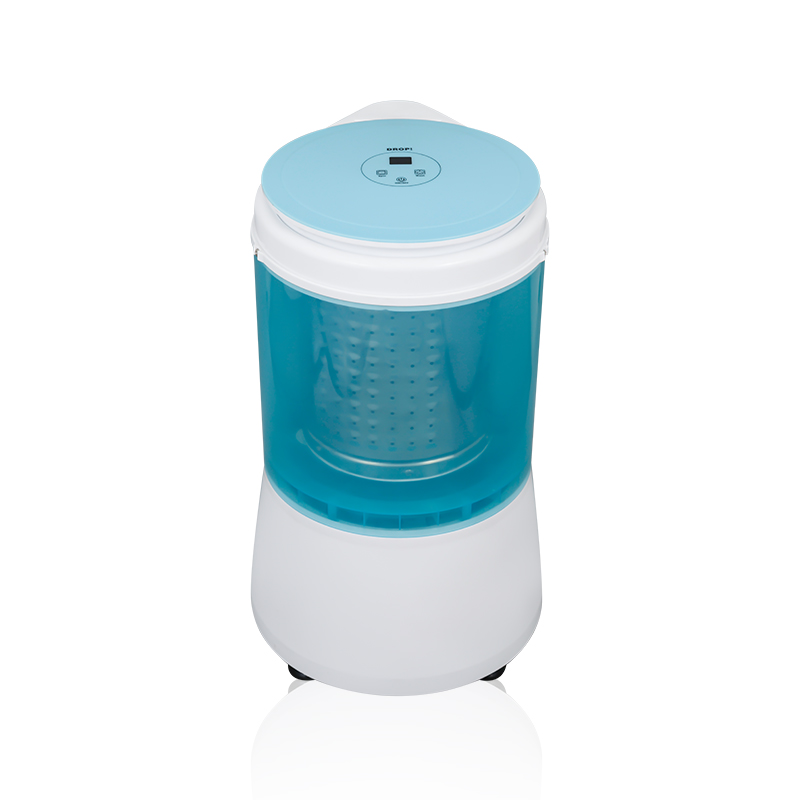Introduction
As global energy prices rise and sustainability becomes a pressing issue, more households are asking: how much energy does laundry actually consume? Laundry appliances, once considered ordinary household tools, are now central to conversations about energy efficiency, cost savings, and eco-friendly living.
Two common choices — the washing machine and the spin dryer — offer different benefits. Washing machines dominate in convenience, while spin dryers are often praised for efficiency. But when it comes to daily laundry energy consumption, which one really has the edge?

Energy Consumption Overview
Washing Machines
A washing machine is designed to wash, rinse, and spin clothes in a single cycle. However, this convenience comes at an energy cost.
- Water Heating: A major portion of energy is consumed when the machine heats water. Washing at 60°C can use twice as much energy as washing at 30°C.
- Drum Rotation: Motor-driven cycles consume steady electricity, especially during long wash programs.
- Average Consumption: Depending on capacity, model, and cycle, a washing machine typically uses 0.3–2 kWh per load.
Efficiency Rating Matters
Modern appliances carry energy efficiency labels (A+++ in Europe, Energy Star in the U.S.). These labels help consumers identify machines that use less power per wash. Still, even the best washing machines consume more energy than a spin dryer.
Spin Dryers
A spin dryer is a compact appliance dedicated solely to water extraction. It does not use water or detergent, making it simpler but more limited.
- Operation: Clothes are placed inside a drum that spins at high speed (up to 2800 rpm), pushing water out through centrifugal force.
- No Heating: Unlike washing machines, spin dryers do not heat water, drastically lowering electricity usage.
- Average Consumption: Between 0.1–0.3 kWh per load, far lower than most washing machines.
Key Advantage
By removing more water mechanically, clothes dry faster — whether hung outdoors or placed in an electric tumble dryer. This can reduce the total household energy footprint significantly.
Performance and Practical Use
Advantages of Washing Machines
- All-in-One Convenience: Washes, rinses, and spins without extra appliances.
- Modern Technology: Many machines feature eco-programs, water-saving sensors, and smart controls.
- Market Standard: Universally available and widely accepted as the default laundry solution.
Limitations
- Higher Energy Cost: Particularly when hot water cycles are used.
- Bulky Size: Not suitable for very small apartments or off-grid living.
Advantages of Spin Dryers
- Energy Efficiency: Consumes only a fraction of electricity compared to washing machines.
- Faster Drying: Extracts more water than a washing machine’s spin cycle, cutting down drying time.
- Compact and Lightweight: Easy to move, ideal for small homes or student housing.
Limitations
- Not a Washer: Requires clothes to be pre-washed in a washing machine or by hand.
- Capacity: Usually smaller than washing machines, handling 2–5 kg of laundry per cycle.
Environmental Impact
Washing Machines and Sustainability
- Water Usage: Washing machines consume 40–90 liters of water per load.
- Carbon Footprint: High when hot water cycles are used.
- Recycling: Larger components make recycling challenging at end of life.
Spin Dryers and Sustainability
- Lower Power Demand: Saves energy during the drying phase.
- Complementary Role: Best used alongside a washer to minimize reliance on tumble dryers.
- Carbon Reduction: By reducing drying time, households can lower greenhouse gas emissions tied to electricity.
Consumer Trends
Shift in Buying Patterns
- In countries with rising electricity costs (such as parts of Europe in 2022–2023), spin dryers gained popularity as a secondary appliance.
- Consumers in urban apartments and student housing favor spin dryers for their size and low power use.
Market Innovation
- Manufacturers are now exploring hybrid laundry solutions: machines that combine washing efficiency with spin-drying effectiveness.
- Eco-conscious buyers are pushing brands to create smart laundry tech with reduced energy and water consumption.
Energy Use Comparison Table
| Appliance |
Average Energy per Load |
Water Usage |
Main Advantage |
Main Limitation |
| Washing Machine |
0.3 – 2 kWh |
40 – 90 liters |
Cleans and spins in one cycle |
Higher energy & water usage |
| Spin Dryer |
0.1 – 0.3 kWh |
None |
Very energy efficient, fast dry |
Cannot wash clothes |
When comparing spin dryers vs washing machines, the answer depends on context:
- For convenience and everyday washing, the washing machine is unmatched. It remains the household standard because it combines washing and spinning in one appliance.
- For energy savings and sustainability, the spin dryer is the winner. Its ability to extract water quickly and with minimal power makes it highly efficient, especially when paired with a washing machine or used to replace an energy-hungry tumble dryer.
Bottom line: If the goal is lowering daily energy bills and reducing environmental impact, a combination of both appliances may be the best strategy. Wash clothes in a modern, energy-efficient washing machine, then finish with a spin dryer to cut drying time and power use.
